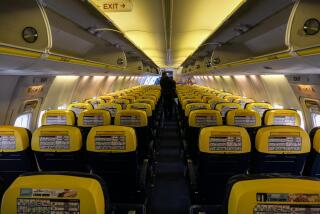An airline broke an activist’s wheelchair. Her death months later amplified calls for change
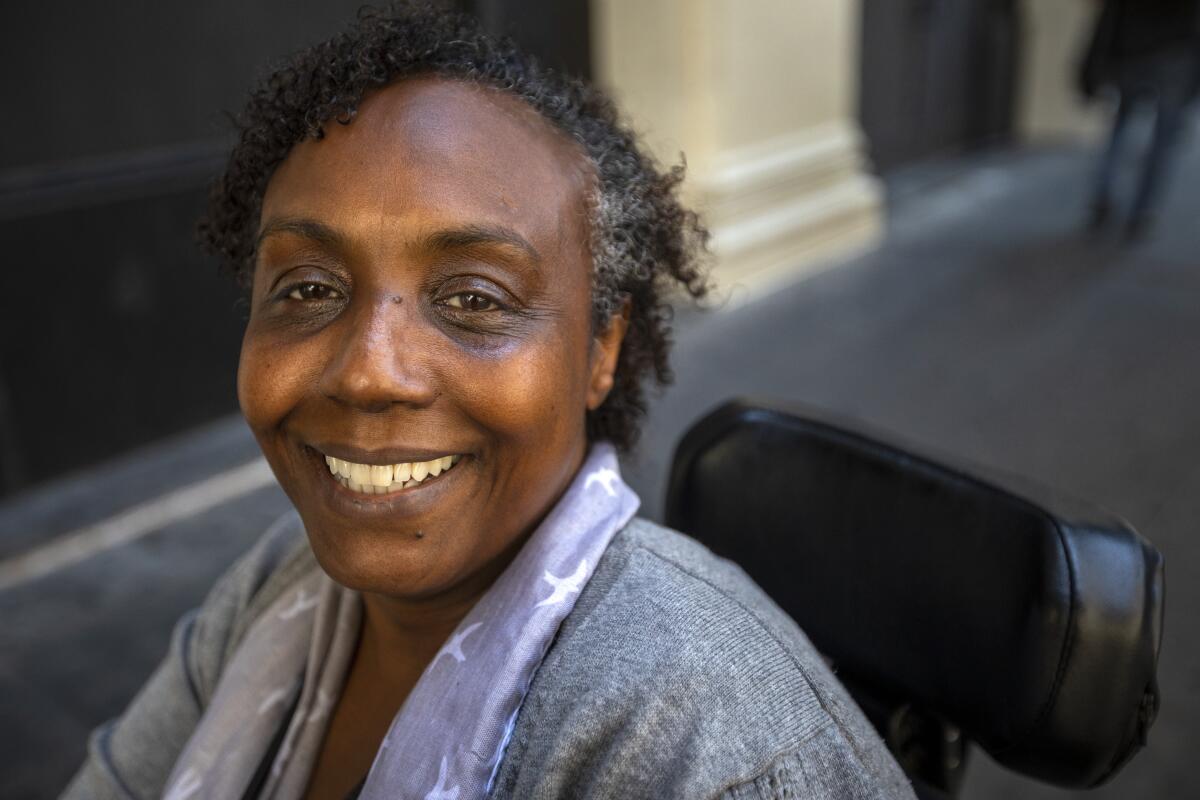
- Share via
Flying to Washington, D.C., was supposed to be just another adventure for Engracia Figueroa.
Figueroa, 51, had survived getting hit by a train decades ago and made clear her life was far from over. In Los Angeles, she rolled in her wheelchair to acting gigs and vegan restaurants, learned to surf, and pressed for change as an activist.
Before the Washington rally where she advocated for public investment in caregiving, Figueroa had phoned one of her sisters and marveled at the sunny day ahead. She was especially excited about the trip after being hemmed in during the COVID-19 pandemic.
“She had no trepidation that anything was going to happen,” her sister Lettice Mahoney said. “Not at all.”
Figueroa returned to L.A. to find that her motorized wheelchair — a custom device that cost tens of thousands of dollars — had been broken.
At Los Angeles International Airport, she waited roughly five hours in a manual wheelchair that did not fit her body, which reopened an old sore, according to her attorney, Joshua Markowitz.
In videos posted on Facebook, her anger waxed as the hours passed. “Tomorrow makes 30 years that I’ve been disabled. And I’ve been disabled again” by an airline, she said, punctuating her lament with profanity.
Roughly three months later, she was dead, after worsening illness that included skin grafts, hospitalizations and an emergency surgery to pare away infected bone and tissue, according to family members and her lawyer.
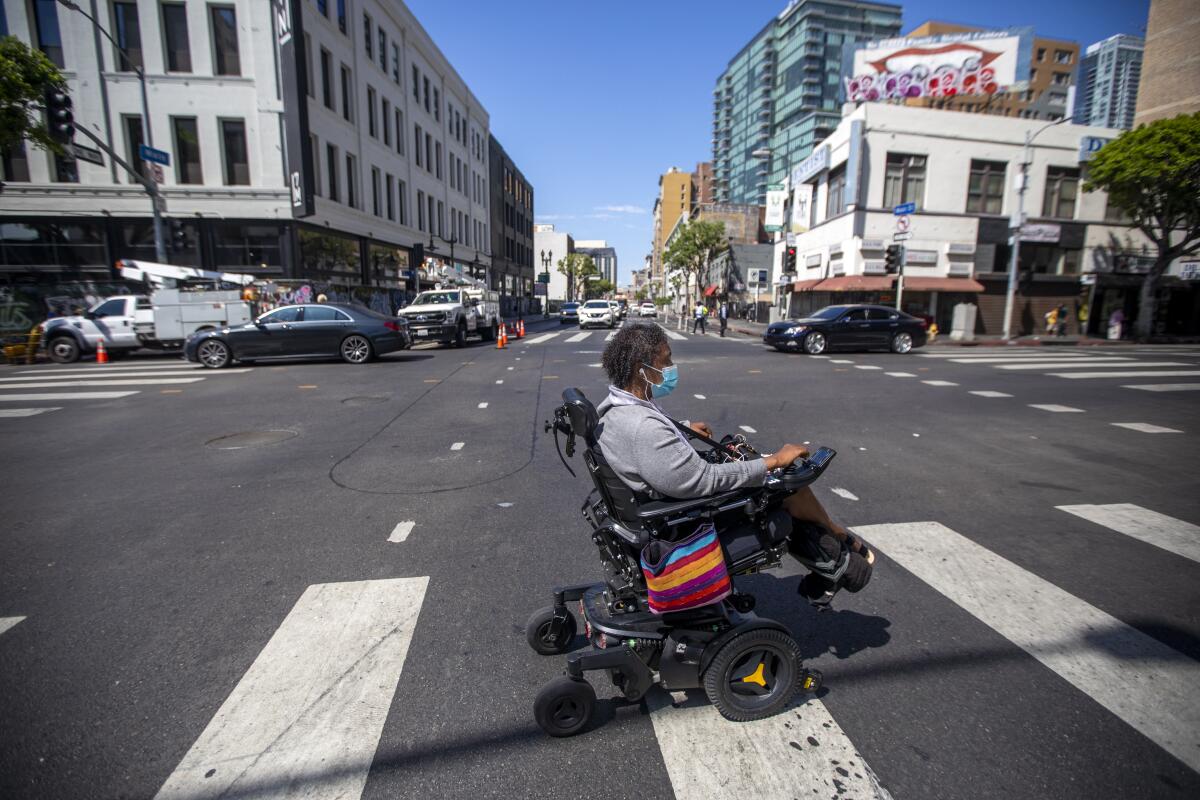
Whether the incident led directly to her death, as Markowitz has argued, is poised to become the subject of litigation. United Airlines did not comment on such claims but has expressed condolences to her friends and family. The U.S. Department of Transportation is also investigating what happened, Secretary Pete Buttigieg recently informed her family.
In a statement, United said that “while each customer and their baggage is important to us, we are particularly focused on taking care of special items like wheelchairs and scooters, which are essential for those traveling with them.”
Regardless of how her case might play out in court, Figueroa’s death has amplified calls to fix a system that disabled activists have called archaic and dangerous. Hand in Hand, the advocacy group she was rallying with in Washington, launched a petition calling for airlines to stop breaking wheelchairs. Paralyzed Veterans of America has invoked Figueroa as it pushes for stricter rules about accessibility on airplanes.
Before Figueroa died, “she told me, ‘I think this is my calling,’” her sister Sandi Porter said. “‘You know there are no ADA laws in the sky?’”
::
For many wheelchair users, Figueroa’s story has been infuriatingly familiar. Flying is hardly a glamorous experience for most travelers, but wheelchair users have likened their risks to fearing the flight crew might casually break your legs.
Whenever someone has to give up their wheelchair — especially one customized to fit them— “it’s like being separated from a part of your body,” said Rebekah Taussig, a Kansas City author who has written about her experiences in the air.
“People tend to see wheelchairs as interchangeable,” like chairs at a table, Taussig said, but for many users they are more like a pacemaker, specially designed to “support them in whatever ways their bodies need.”
Federal reports show that more than 6,500 wheelchairs and scooters were damaged on commercial flights between January 2020 and August 2021. That amounts to roughly 1.3% of wheelchairs and scooters put on planes in that time. When big airlines first began reporting the numbers before the pandemic, they averaged 26 broken or lost devices a day.
Losing a wheelchair can cut off disabled people from work and school. It can be a financial blow, with wheelchairs costing up to $50,000. And it can jeopardize health: Pressure sores can develop within hours as blood flow is cut off to a particular area, leading to the death of tissue and putting people at risk of infections, said Emily Metzger, a specialist in neurologic physical therapy at Ronald Reagan UCLA Medical Center.
Such wounds are a particular risk for people with spinal cord injuries, who do not feel the immediate discomfort that prompts other people to shift in their seats as bones press against the skin.
“That’s why people are so reliant on their mobility devices,” which help them tilt and shift weight, Metzger said.
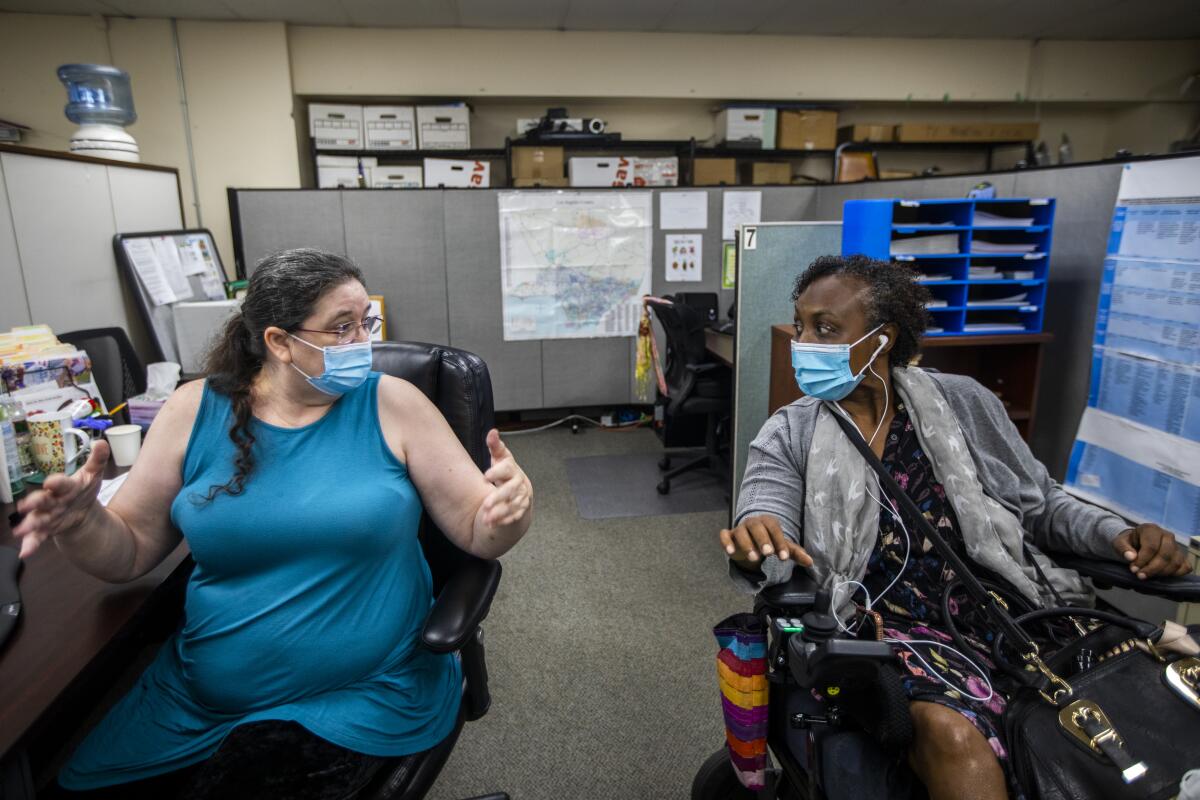
Disabled people have also had to be lifted into airplane seats by flight staff, who can drop and injure them.
And before they get to those seats, wheelchair users can be hurt as they are transferred and strapped into a narrow “aisle chair,” which Purdue University engineering professor Bradley Duerstock likened to the rolling device used to truss up Hannibal Lecter in “The Silence of the Lambs.”
Then there are airplane bathrooms. Tiara Simmons Mercius, a disabled activist in Long Beach, said she once had to crawl from the second row to the front lavatory as other passengers watched. To avoid such indignity, she said, many wheelchair users resort to “pee math” — figuring out how long they can go without drinking before a flight — which can put them at risk of urinary tract infections and other complications.
Many wheelchair users just avoid flying. Michele Erwin, founder and president of the advocacy group All Wheels Up, said roughly 37% of wheelchair users surveyed by her organization said they did not fly at all. Many more cited reasons for avoiding it. Erwin, whose son uses a wheelchair and loves sushi and anime, said she had to turn down a Make-a-Wish trip for him to Japan because of safety concerns.
Duerstock said he avoids academic conferences that aren’t in driving distance. And in Long Beach, Simmons Mercius has gone more than a decade without seeing her family in New York, missing funerals and new babies and family reunions.
When she heard that Figueroa had died, Simmons Mercius said she was “shocked but not shocked.”
“It should not take the death of somebody for people to pay attention,” she said.
::
Erwin, who started her organization after an aggravating experience flying with her son, has pushed for a secured spot for wheelchairs so that air travelers don’t have to be separated from them.
A recent report from the National Academies of Sciences, Engineering and Medicine found that this issue appears to be technically feasible on most U.S. passenger planes.
Erwin argues that along with costs, airlines should count up the possible savings in replacing wheelchairs, legal payouts, flight vouchers and injuries to airline workers.
Duerstock said the engineering issues are “solvable problems.” But “financially, they see this as only a loss of money.”
The industry group Airlines for America declined an interview. In a statement, it said U.S. airlines are committed to providing “the highest level of customer service” to passengers with disabilities and are working with disability groups and manufacturers to address guidelines for safely handling wheelchairs.
“I’ve never met a ground handler in my life — from Dubai to London to yesterday in Boston — who doesn’t care” if a wheelchair gets broken, said Eric Lipp, executive director of Open Doors Organization, a nonprofit that provides training for scores of air carriers on handling assistive devices. “Everybody wants to fix it.”
Lipp, who uses a scooter, said the problem is not just that airplanes have not been designed to safely carry wheelchairs, but that wheelchairs approved by health insurers are not built to be airworthy.
Unlike other forms of transportation such as buses, air travel was excluded from the Americans with Disabilities Act, the landmark law that protects the civil rights of disabled people. It was passed four years after a federal law regulating air travel — the Air Carrier Access Act — that prohibited discrimination against people with disabilities.
Disabled activists object that the two don’t provide equal protections. If wheelchair users find that bus companies are flouting the ADA, they can sue, said Heather Ansley, Paralyzed Veterans of America’s associate executive director of government relations. Under the air carrier law, by contrast, “all you can do is file a complaint” with the federal government or the airline.
Paralyzed Veterans of America has called for strengthening the air carrier law. Charles Brown, its national president, said he was once dropped on the jetway while being transferred to an aisle chair — an incident that fractured his tailbone and led to a dangerous infection like the one that Figueroa suffered, putting him in the hospital for months.
“To know that she died of the same infection is just —” Brown broke off. “It crystallizes that we need to get this passed now.”
::
Figueroa, known to her family as “Gras,” was 22 when she fainted and tumbled in front of an oncoming train in the Bay Area city of San Leandro. She survived with a spinal cord injury and a left leg amputated above the knee.
“It was a hiccup in her life,” said Mahoney of her sister. “It didn’t end her life.”
She went on to open a beauty salon. She ran a trucking business. She remained “the life of the party,” Mahoney said. When a wound temporarily landed her in a nursing facility more than a decade and a half ago, her siblings offered to buy her a wheelchair-accessible condo.
“She said, ‘You can buy it, but I’m out of here,’” Porter recalled. “She didn’t want anything or anybody to tie her down.”
Figueroa moved to Los Angeles and got an apartment in Hollywood, then moved to Van Nuys. She headed the board of Communities Actively Living Independent and Free, or CALIF, a nonprofit serving and advocating for people with disabilities. She snagged acting gigs, including an appearance as an extra on “American Horror Story: Asylum.”
Her Instagram was a parade of vegan meals, her gleaming smile among friends and political musings salted with profanity. She shared articles online about Black historical figures and African royalty of centuries past, urging more than 1,700 Facebook friends to “learn yourself some real history.” At one point, she declared #hotdisabledauntiesummer.
Lillibeth Navarro, executive director of CALIF, still speaks about Figueroa in the present tense. Surviving an accident “hasn’t diminished her self-worth. She is just as comfortable in her skin. She hasn’t lost an iota of self-respect,” Navarro said.
“She feels beautiful. She feels whole. She has fun,” Navarro said.
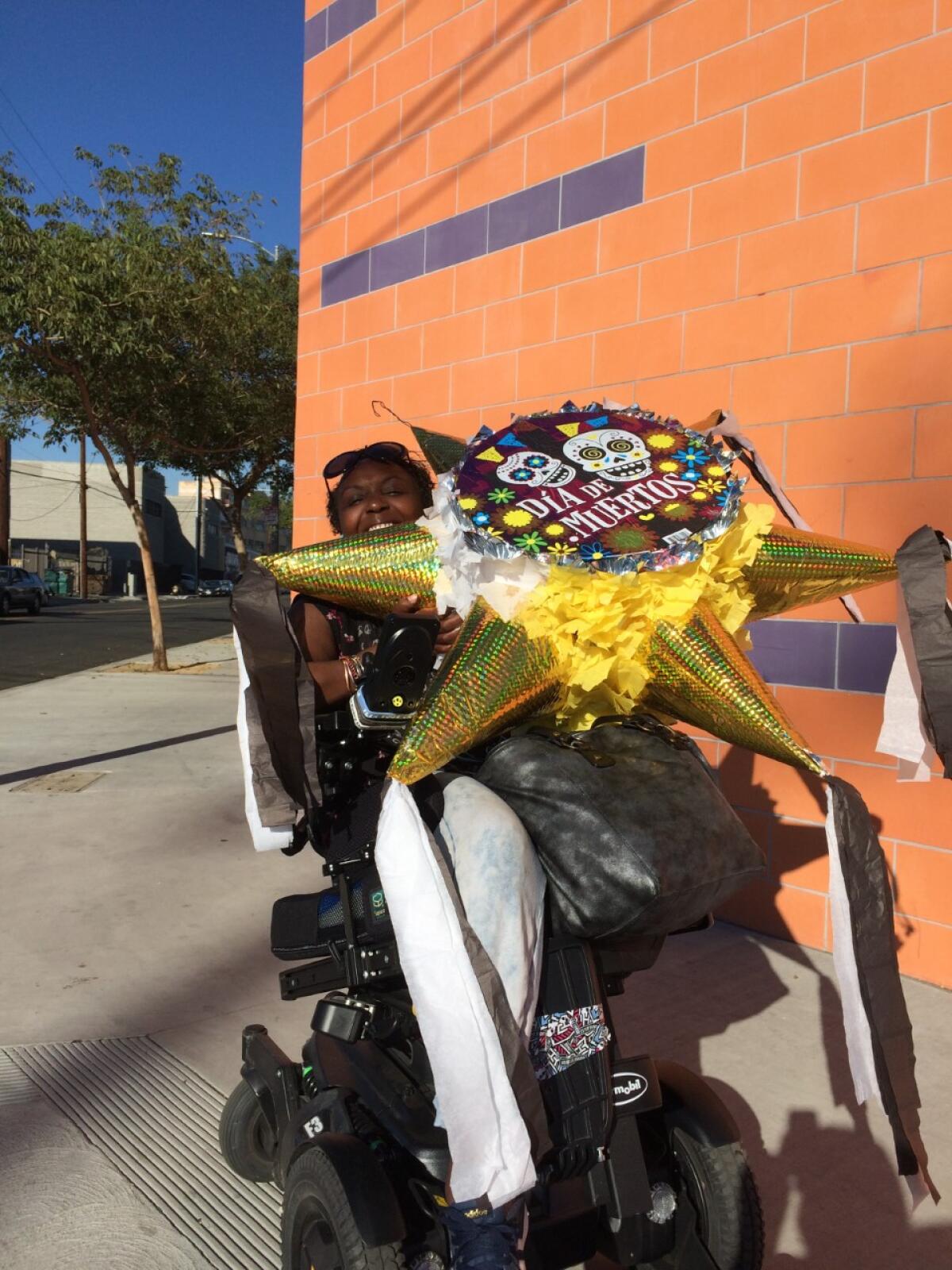
Figueroa became a vegan and was working on adapting Puerto Rican and Southern recipes from her family. She helped curate films for the ReelAbilities festival. She vied to become Ms. Wheelchair California on a platform that included issues affecting disabled people, such as affordable housing, living wages, media portrayals and marriage equality.
She also spoke up about the distinct issues faced by disabled people of color.
When some disability advocates tried to adopt the phrase “disabled lives matter,” Figueroa resisted, telling them that it was disrespectful to Black Lives Matter and “you can’t just take it and make it your own,” her friend Carrie Madden recalled.
Disability equity strategist Andrea Jennings, who often read with Figueroa for video auditions, said that even her acting was a form of advocacy. “If we could do this,” she said, “we were paving the way for others like us.”
::
Figueroa had gotten a pressure sore before her D.C. trip, but it had been treated. Her physician wrote in an August note that her sore had been “healing well and filling in nicely” before the flight, but sitting in the airport wheelchair “caused a deep tissue injury to the wound.”
Markowitz, who said he plans to sue United on behalf of Figueroa’s surviving siblings and estate, said the hours Figueroa spent in the manual wheelchair reopened the old sore. He traces her health problems back to the flight.
“It literally cost Engracia her life,” he said.
United said it had arranged for a loaner wheelchair for Figueroa to take home the afternoon she arrived at LAX, but Markowitz said it fit her poorly. The airline also said her damaged wheelchair had been repaired by her preferred vendor within a week, but she didn’t respond to attempts to arrange delivery. Markowitz said Figueroa had worried that electrical equipment could be damaged and spark a fire she could not escape.
Instead, Figueroa and Hand in Hand demanded that United replace her wheelchair entirely and launched a public campaign. Markowitz said the airline eventually agreed to replace the motorized chair, which was delivered in early October.
But breaking her wheelchair “re-disabled her,” Mahoney said. “Her health went downhill very fast.”
She endured skin grafts and battled an infection. Her sisters said she struggled to eat.
Porter said at one point, Figueroa lamented having to give up a possible part on the Angela Bassett show “9-1-1.”
“I said, ‘Gras, once your health improves, there will be other parts,’” Porter recalled. “She said, ‘But everything is falling in line right now.’”
She died while recovering from an emergency surgery for an infection that had reached her hip bone, Markowitz said. Her family was still waiting on her autopsy as of early January.
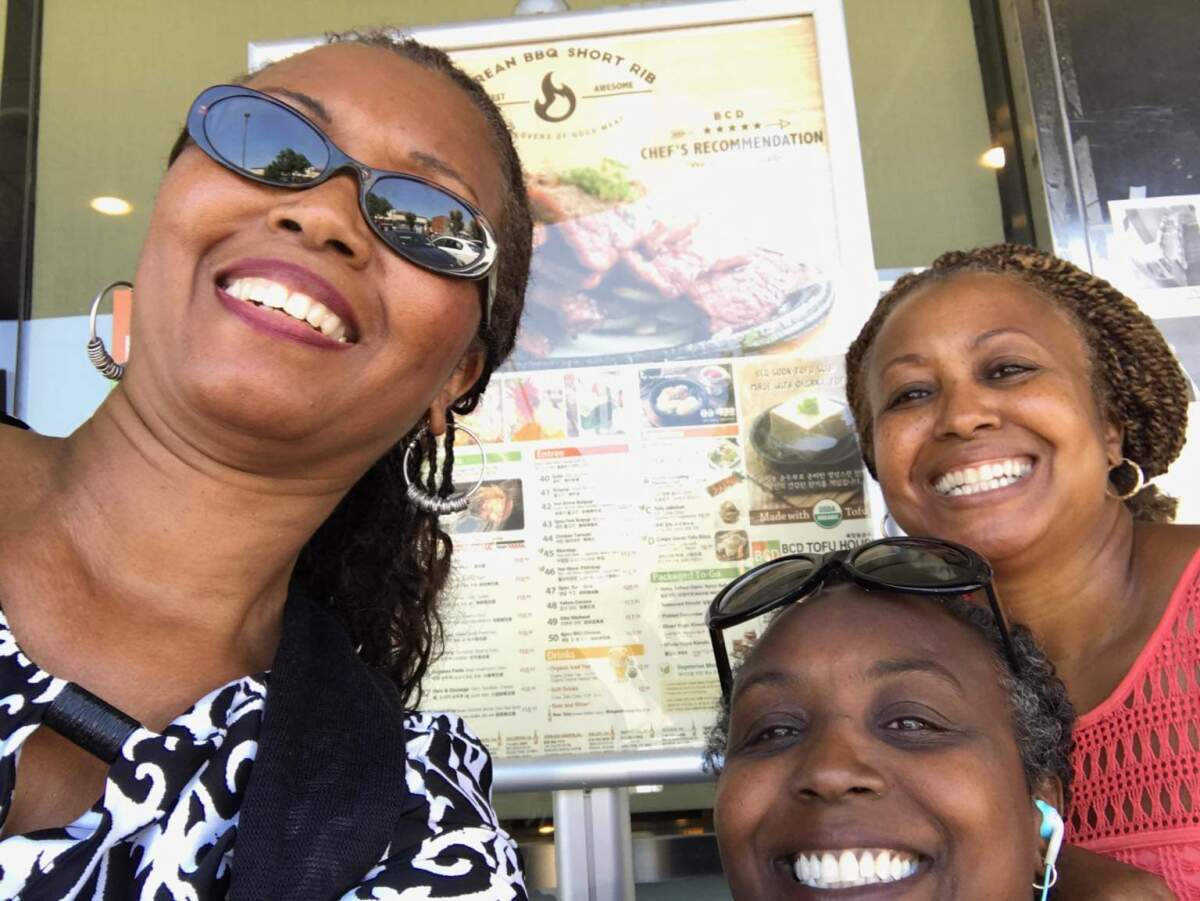
Her sister Sandi Porter yearns to see what Figueroa was writing about her life. Navarro is puzzling over a recent dream in which Figueroa gave her a cryptic warning about circles. She wants to ask her, “What do you mean?”
Mahoney said her sister “loved life. And that’s why this is so hard.”
“She was just getting started,” she said.
More to Read
Sign up for Essential California
The most important California stories and recommendations in your inbox every morning.
You may occasionally receive promotional content from the Los Angeles Times.

